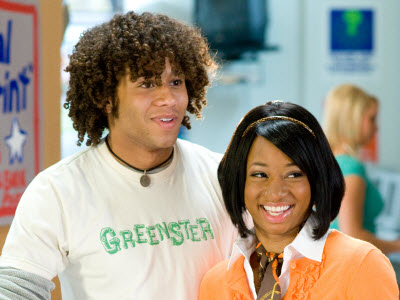Bell Hooks makes the point that American society objectifies women of color by placing them in highly sexualized positions and casting them in promiscuous roles throughout the media..Not only, however, are Black women being portrayed in this dirtied lens, but there are women of other ethnicities who CHOOSE to ooze sex and objectify themselves. (ahem...Beyonce and the Latino community's prize possession, Shakira).

I love Shakira. Don't get me wrong the belty, pint-size singer is brimming with bubbliness, talent, class(?),culture (speaks 6 languages, travels frequently), beauty, intelligence (140 IQ and spoke at Oxford...acknowledged by the U.N for her organization, Pies Descalzos), humanitarian effort, and her world-reknown dancing (hips).
However....despite her seemingly perfect mirage, take note of Shakira's constant rebirths, renewals, new locks, new music direction, etc. too many metamorphoses !!!
Particularly, Shakira's videos are notoriously sexualized and the prop of a bed with her barely-clothed body, adorn our television screens. She clearly objectifies herself sexually with lyrics like in the song, "Wherever, Whenever" ("lucky that my breasts are small and humble so you don't confuse them with mountains"), or just the song title as it is, "Underneath Your Clothes." Shakira has no problem baring it all with her costumes (which can be argued are traditional for showing the movement of the body with her belly dancing)and her lyrics, wearing her heart on her sleeve. Is
Shakira giving the false impression that Latinos are sensual, horny creatures?

As quoted in Entertainment Daily, Shakira remarks: “I do think libido is the engine of the world. Forward or backwards. For good or ill. Sometimes when we repress our libido we regress. When we were in the Dark Ages, it was a question of humanity somehow managing to forget about itself. We put God in the centre of society, and people forgot about their own nature and desires. There was a huge deal of repression.”
Is it fair to say she is objectifying herself for publicity by CHOICE or is Shakira just living freely? She was once the little brunette, curly headed yodelling child star with darker, olive skin, and transitioned to THE BLONDE as she came to America and the rest of the world, her skin becoming lighter and her frame becoming less curvy as if to adjust to new standards.
So, here's an assignment: go look at Shakira's music videos and see how many times she is positioned with another man (as her prop, as if the only way to assert her leadership and dominatrix complex), in a bed, dances promiscuously, or uses sexual innuendos in her lyrics.
Just watch her newest video, "Gypsy" and decide for yourself.
http://www.metacafe.com/watch/sy-68676375001/shakira_gypsy_official_music_video/
(disclaimer: I LOVEEEE SHAKIRA! DON'T TAKE OFFENSE TO MY CRITICAL ABILITIES TO LOOK INTO HER TRANSFORMATIONS! IT IS NOT PERSONAL!)







































